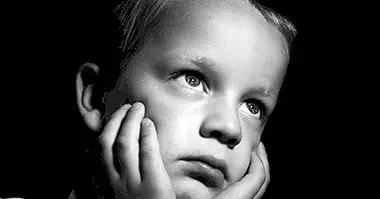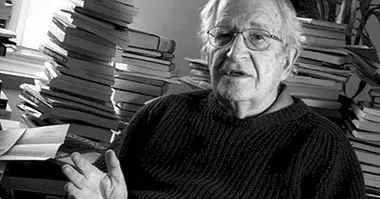Critical didactics: characteristics and objectives
Critical didactics, or critical pedagogy , is a philosophy and a social movement that applies concepts of critical theory to the teaching-learning process. Being a philosophy, it offers a series of theoretical perspectives that problematize both the contents and the purposes of pedagogy. Likewise, being a social movement, it problematizes the very act of educating and is promoted as an inherently political perspective.
In this article we will see what critical didactics is and how it has transformed educational models and practices.
- Related article: "Types of Pedagogy: educating from different specialties"
Critical didactics: from education to consciousness
Critical pedagogy is a theoretical-practical proposal that has been developed to reformulate traditional notions and practices of education. Among other things, he proposes that the teaching-learning process is a tool that can foster critical awareness , and with this, the emancipation of oppressed people.
Critical pedagogy is the theoretical basis of educational practice; and didactics, on the other hand, is the discipline in which this base is specified. That is, the didactic it becomes visible directly in the classroom and in the contents that are taught , while pedagogy works as the ideological sustenance (Ramírez, 2008). Both processes, theoretical and practical, are understood from this perspective as a single process, so their characteristics tend to be encompassed in the same way under the terms "critical didactics" or "critical pedagogy".
Its theoretical basis
At the epistemological level, critical didactics starts from considering that all knowledge is mediated by the categories of understanding (Red,), with which, it is not neutral or immediate; its production is included in the context and not outside it. While the educational act is fundamentally an act of knowledge, critical didactics takes into account its consequences and political elements .
The latter also requires thinking that the school of modernity is not a creation that transcends history, but is linked to the origins and development of a particular type of society and state (Cuesta, Mainer, Mateos, et al, 2005); with which, it fulfills functions that it is important to visualize and problematize.
This includes both school content and the emphasis on the subjects they teach, as well as the pedagogical strategies and the relationships that are established between teachers and students. It specifically promotes a dialogic relationship, where it is established in an egalitarian dialogue strongly focused on the needs of students and not just the teacher.
Likewise, the effects that teaching practices can have on students are considered, especially those that have historically been left out of traditional education.
- Maybe you're interested: "Educational psychology: definition, concepts and theories"
Paulo Freire: precursor of critical pedagogy
At the end of the 20th century, the Brazilian pedagogue Paulo Freire developed a pedagogical philosophy in which he defended that education is a tool that it must be used to rid of oppression . Through this, it is possible to create critical awareness in people and generate fundamentally communitarian emancipatory practices.
Freire tried to empower students in the ability to think critically about their own student situation; as well as contextualize that situation in a concrete society . What I was looking for was to establish connections between individual experiences and the social contexts in which they were generated. Both his theory of the pedagogy of the oppressed, and his model of community education, represent a large part of the foundations of critical didactics.
6 theoretical assumptions of pedagogy and critical didactics
According to Ramírez (2008) there are six assumptions that need to be considered in order to describe and understand critical pedagogy. The same author explains that the following assumptions make reference both to the theoretical sustenance of critical didactics and to the educational activities that are generated from these.
1. Promote social participation
Following the model of community education , critical didactics promotes social participation, beyond the context of the school. It includes the strengthening of a democratic thought that allows to recognize problems and alternatives of solution as a whole.
2. Horizontal communication
It is about promoting the equality of conditions between the will of the different subjects that are involved in the teaching-learning process. This dissolves the hierarchical relationship and a process of "unlearning", "learning" and "relearning" is established, which also influence the subsequent "reflection" and "evaluation".
One of the examples of didactic strategies in concrete, and within the context of the classrooms, are the debates and the consensus that are applied so much to think concrete social problems, as in the structuring of the plans of study.
3. Historical reconstruction
Historical reconstruction is a practice that allows us to understand the process by which pedagogy has been established as such, and consider the scope and limitations of the educational process itself , in relation to political and communicative changes.
4. Humanize educational processes
It refers to the stimulation of intellectual abilities, but at the same time it refers to sharpening the sensory apparatus. Is about create the necessary conditions to generate self-government and collective actions; as well as a critical awareness of the institutions or structures that generate oppression.
Recognizes the need to locate the subject in the framework of social circumstances, where education is not only synonymous with "instruction"; but a powerful mechanism for analysis, reflection and discernment, both of one's own attitudes and behaviors, and of politics, ideology and society.
5. Contextualize the educational process
It is based on the principle of educating for community life, looking for signs of collective identity that question cultural crises and values based on segregation and exclusion. In this way, the school is recognized as a scenario of criticism and questioning of hegemonic models.
6. Transform social reality
All of the above has consequences at the micropolitical level, not only within the classrooms. The school is understood as a space and a dynamic that collects social problems, which makes it possible to propose concrete ways to find solutions.
Bibliographic references:
- Rojas, A. (2009). Critical didactics criticizes the critical banking education. Integra Educativa, 4 (2): 93-108.
- Ramírez, R. (2008). The critical pedagogy. An ethical way to generate educational processes. Folios (28): 108-119.
- Cuesta, R., Mainer, J., Mateos, J. et al. (2005) Critical didactics. Where there is need and desire. Social conscience. 17-54.



















